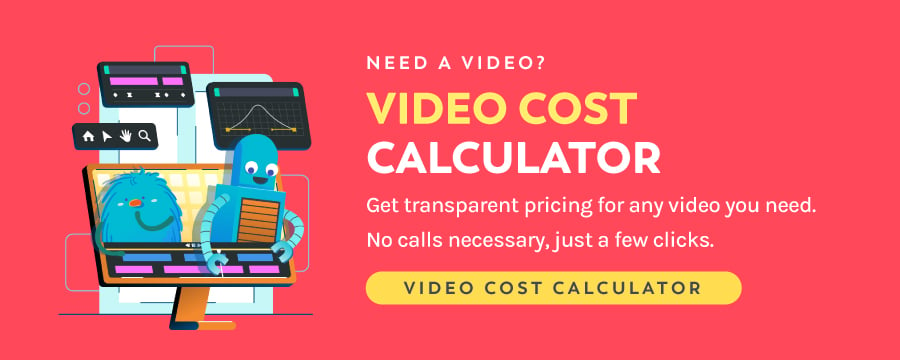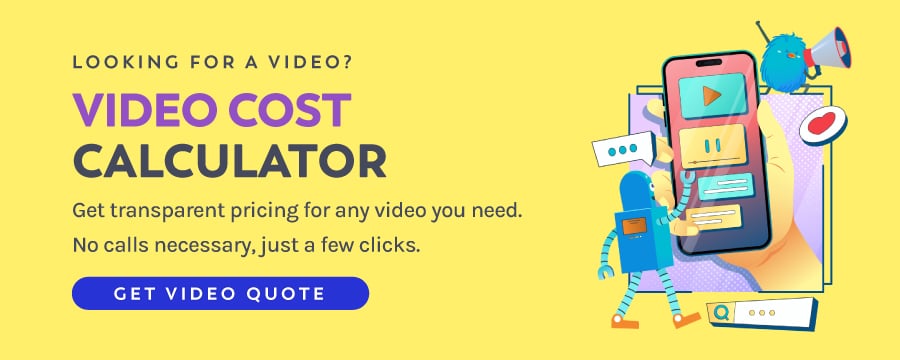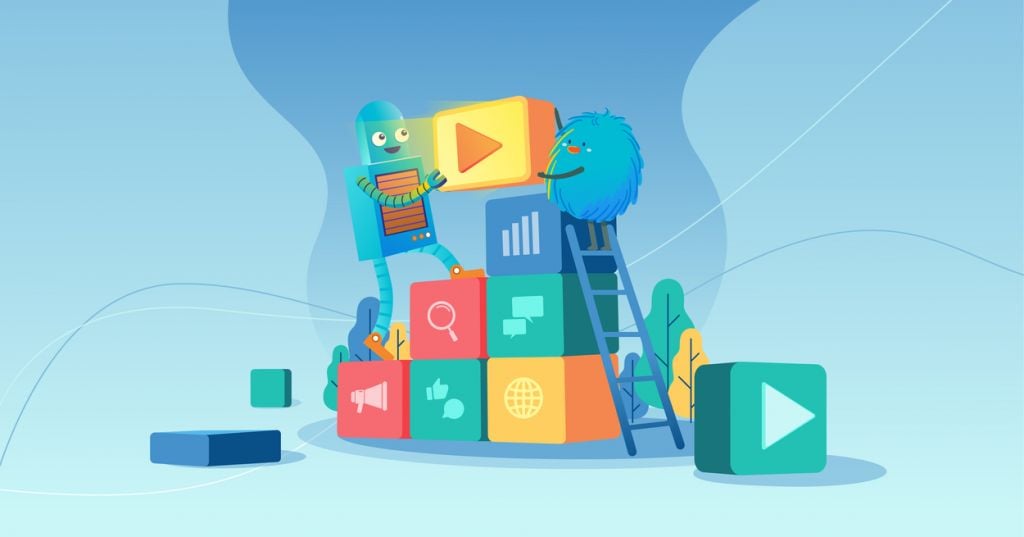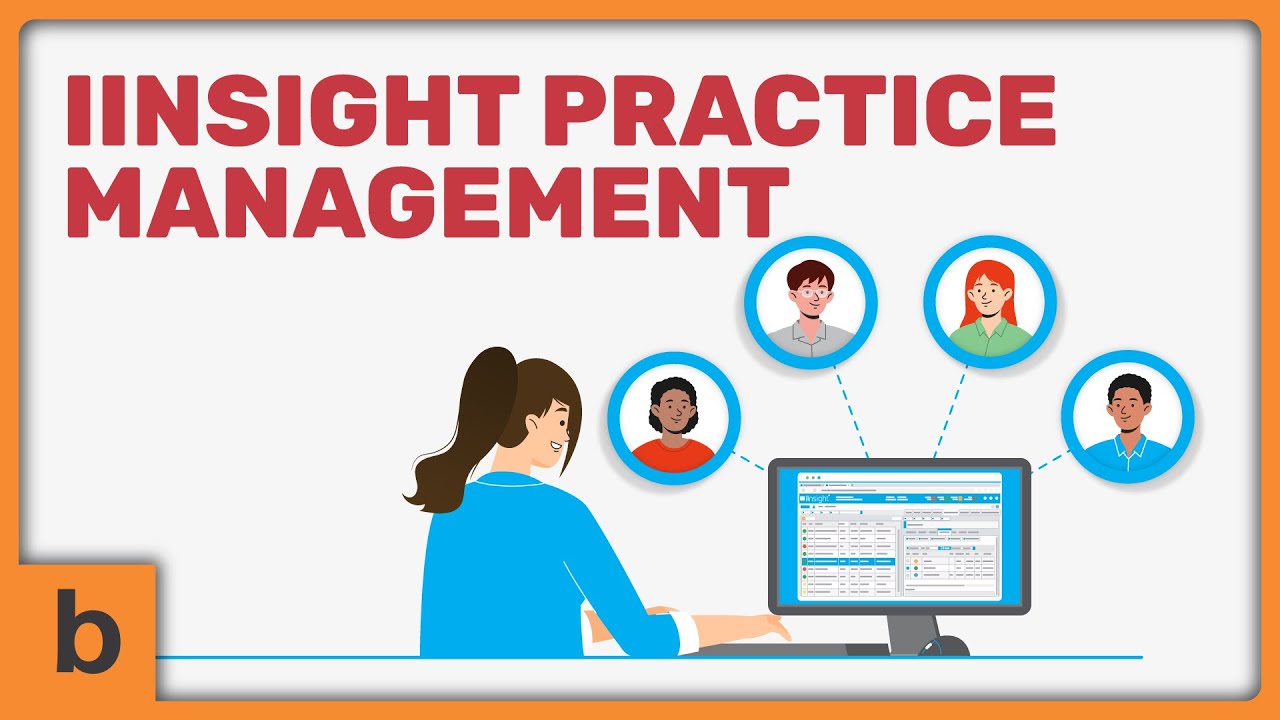Table of Contents ×
- 1 1. An Explainer Video Uses Casual Language
- 2 2. A SaaS Explainer is Suitable for Product Videos
- 3 3. A SaaS Video is Time-Saving Content
- 4 4. An Explainer Video Enhances SaaS Marketing
- 5 How to Structure a SaaS Explainer Video That Converts
- 5.1 1. Hook (0–10 seconds): Catch Their Attention Instantly
- 5.2 2. The Problem (10–20 seconds): Show You Understand Their Pain
- 5.3 3. The Solution (20–40 seconds): Introduce Your Product
- 5.4 4. Key Features & Benefits (40–60 seconds): Back It Up with Proof
- 5.5 5. Call to Action (60–75 seconds): Tell Them What to Do Next
- 6 When to Use Explainer Videos in the SaaS Customer Journey
- 7 Wrapping Up: Sell Your SaaS with Strategy
- 8 FAQs On SaaS Videos
I’ve seen this happen more than once.
A brilliant team of computer engineers—say, from MIT or other top institutions—comes together to build a powerful SaaS solution.
The software is sleek, intuitive, and functionally flawless. Everyone on the development side is proud. And rightly so.
But when launch day comes… nothing. The crowd isn’t cheering for you after the final product launch.
I’ve worked with enough SaaS founders to know how disheartening that moment can be.
After months of development, you’re left wondering: Why aren’t we getting customers? Did we miss something in our go-to-market strategy?
In many cases, the problem isn’t the product, but the communication.
Potential users simply don’t understand what your software does, how it works, or why they should care.
Even if you’ve built something amazing, if it’s not clearly explained, your audience won’t feel confident enough to give it a try.
That’s where we come in. We help SaaS companies bridge that gap with clear, compelling explainer videos.
Whether it’s a product demo, an onboarding walkthrough, or a short video that simplifies your core value proposition, a well-crafted explainer can turn confusion into curiosity and conversions.
I’ll walk you through the four reasons why explainer videos can help your SaaS product stand out and connect with your audience.
Also, I’ll share practical steps to create a SaaS explainer video that actually drives results!
1. An Explainer Video Uses Casual Language
In my experience working with SaaS founders and product teams, one of the biggest hurdles isn’t building the product, but communicating it.
You know your tool inside out. You’ve likely poured hours into refining features that set it apart from other SaaS solutions in your space.
But your audience doesn’t speak the same technical language you use when talking with your dev team.
That’s why we use explainer videos that speak like real people do.
Instead of diving into code-heavy terminology or complex system architecture, we script explainer videos using casual, approachable language.
The goal is to make your product feel simple, useful, and accessible, even to someone with no technical background.
We often enhance that clarity with kinetic typography, animated metaphors, or a warm voiceover narrator to walk viewers through the core benefits and features.
This not only helps build understanding but also keeps your audience locked and more likely to remember your brand.
Explainer videos carry both information and connections to your target market.
And in SaaS, that connection is often the difference between someone clicking “Start Free Trial” or walking away confused.

2. A SaaS Explainer is Suitable for Product Videos
Let’s be honest, we all skip ads when we can. Didn’t we all?
Most people don’t want to sit through a traditional marketing video that just boasts about how “innovative” or “game-changing” a product is.
It feels like noise. That’s why I’ve always believed explainer videos should offer more than hype, but value.
Instead of telling your audience how great your product or service is, show them how it solves a real problem.
Break down the core features. Walk them through the “why” behind your software. Make it click.
We often help SaaS companies create explainer videos that double as product demos, tutorials, and screencast videos.
These videos serve a dual purpose: they educate users while also marketing your product.
In turn, your audience feels like they’ve gained something, even if it’s technically still an ad.
Take the video we produced for Iinsight, for example.
It didn’t just describe the software, but walked users through how it could improve their workflow.
That’s the kind of value-focused approach that builds trust and drives conversions.
In my work with SaaS clients, I’ve seen how one well-crafted explainer video can serve across multiple touchpoints: your website’s landing page, your Facebook business profile, even your YouTube channel.
A combination of modern animation, clean illustrations, and smart graphics can instantly refresh an otherwise dry-looking webpage or social feed.
Besides, it saves time and keeps your messaging consistent across platforms.
I always remind clients: even the best explainer video can fall flat if shared with the wrong audience or on the wrong platform.
It’s essential to understand where your ideal users spend their time online and how they prefer to enjoy content.
That said, distribution matters just as much as creation.
We’ve also shared some actionable social media sharing tips to help SaaS companies get more reach and engagement without sounding too salesy.
Check out our DIY social media sharing tricks for more insight on this.
3. A SaaS Video is Time-Saving Content
Most SaaS users don’t want to wade through a ten-step tutorial just to figure out how your software works.
I’ve been in enough product meetings to know that if people can’t grasp what your tool does and why it matters in the first minute, you’ve probably lost them.
That’s why explainer videos are so powerful.
Instead of lengthy manuals or dense blog posts, we use motion graphics and storytelling to show how your SaaS product works.
With the right visuals, pacing, and structure, a 60- or 90-second video can cover what it might take pages of text to explain.
And there’s science behind this. Around 90% of information processed by the brain is visual, and we process visuals 60,000 times faster than plain text.
I’ve seen firsthand how a strong explainer video accelerates user understanding and improves onboarding, especially for SaaS products with new or unconventional features.
Let’s take NextGlass as an example. They built an app that recommends wine based on your taste preferences. A cool concept, but not exactly self-explanatory.
That was our collaboration with them, where we created an animated explainer video that effectively broke down the technology in a way anyone could understand.
No complex jargon. Just clear, visual storytelling.
If you’ve seen that video, you know what I mean. It makes the product feel both accessible and exciting.
But here’s the thing: creating a video like that isn’t just about throwing some animations together.
I always tell clients that a successful SaaS explainer requires strategic planning. You need to:
Choose the right animation style that aligns with your brand
Make sure your messaging is clear and accurate
Avoid restricted or overly technical content that might alienate users
And most importantly, align the video with your business goals
We often recommend studying your competitors’ videos on YouTube or other platforms, not to copy, but to see what works (and what doesn’t) when it comes to explaining complex software.
A quick research upfront can save you a lot of second-guessing later on.
4. An Explainer Video Enhances SaaS Marketing
Every great product needs a strong brand presence to back it up.
In my experience, explainer videos are one of the most effective tools for building presence across both digital platforms and search engines.
Of course, there are good reasons behind it.
Explainer videos clarify what your software does, while also improving your discoverability.
When embedded on your website, they contribute to longer user sessions and lower bounce rates
Both are key factors that search engines consider when ranking pages.
I’ve seen our videos help SaaS clients earn better click-through rates on Google, especially when paired with a strong video thumbnail.
Besides, people are visual by nature. When a search result includes a video snippet, it naturally draws more attention.
Search Engine Watch, in The Rise of Video, noted that video is now a major part of content-rich websites.
When your site includes engaging video alongside other media, it sends a quality signal to search engines, showing that your content is diverse, relevant, and helpful.
According to research from Backlinko, roughly 80% of high-volume keywords now return search results that include rich media, including video, images, carousels, and more.
These results consistently outperform plain-text listings in terms of engagement and visibility.
That’s why we always treat explainer videos as more than just visual aids.
They can be your strategic marketing assets that can drive organic traffic, improve your domain authority, and get your SaaS product in front of the right audience.
How to Structure a SaaS Explainer Video That Converts
I’ve written, reviewed, and directed countless explainer video scripts for SaaS products, ranging from simple productivity tools to niche B2B platforms.
One thing I’ve learned: structure is everything.
Without a clear narrative flow, even the most beautifully animated video can leave viewers confused or uninterested.
We always structure our SaaS explainer videos with conversion in mind.
Here’s the breakdown I use when guiding clients through a high-performing video structure:
1. Hook (0–10 seconds): Catch Their Attention Instantly
People scroll fast, and click away even faster. The first few seconds of your video need to stop them in their tracks.
We always consider the hook very seriously. Some techniques we often use are a bold statement, a pain-point question, and a visual metaphor.
For example
A bold statement: “Still juggling five tools to manage one task?”
A pain-point question: “Losing hours every week to outdated processes?”
A visual metaphor: A chaotic desk, an overwhelmed user, or a loading spinner stuck forever.
A hook is a crucial matter. This moment isn’t about your product, but getting the viewer to say, “Yes, that’s me,” and keep watching.
Read our case study: How to Decide Your Explainer Video Length?
2. The Problem (10–20 seconds): Show You Understand Their Pain
This is where we build empathy. Instead of rushing into your solution, take a moment to show the exact problem your audience is struggling with.
You can describe the challenge clearly and concisely in plain language.
Use relatable scenarios from the user’s daily workflow.
Most importantly, avoid jargon. This isn’t the time to flex technical details.
People respond to products that “get them.” When they feel understood, they’re more open to hearing your solution.
3. The Solution (20–40 seconds): Introduce Your Product
Now it’s time to present your software as the answer.
This is the turning point where the viewer starts thinking, “Okay, maybe this can help me.”
Typically, we show the product in action with real UI (screencast) and simplified animation, highlighting how it addresses the problem directly.
Moreover, we keep the focus on benefits rather than features. This helps audiences grasp the message more clearly.
4. Key Features & Benefits (40–60 seconds): Back It Up with Proof
Once the viewer is interested, they need to understand why your solution works better than the rest.
Even though this isn’t a rule of thumb, mostly you only have time for 2 or 3 highlights.
So, what should you highlight?
The most valuable features for your audience segment (e.g., automation, integrations, dashboard insights).
Tangible outcomes: save time, reduce errors, increase revenue.
Social proof or brief stats, if possible (e.g., “Trusted by 2,000+ marketers”).
I recommend not overloading this section with features, as it may overwhelm viewers with technical terms.
What’s best is to keep it clear and benefit-driven.
5. Call to Action (60–75 seconds): Tell Them What to Do Next
Now, make sure your audience knows what to do with it.
A weak or generic CTA wastes the momentum you’ve built.
Make a catchy and clear CTA, for example:
“Start your free 14-day trial—no credit card needed.”
“Book a demo and see how [Product] fits your workflow.”
“Try it now and simplify your [task] in minutes.”
Consider including an eye-catching CTA design.
Show a clickable button (if it’s a web embed), landing page, or app preview to guide the next step.

When to Use Explainer Videos in the SaaS Customer Journey
Most SaaS companies make the mistake of treating explainer videos as a one-time asset, usually on the homepage or during a product launch.
But in my experience, when you place the right video at the right moment in the customer journey, it can do far more than just explain your product.
Potentially, it can also boost awareness, increase conversions, improve onboarding, and even reduce churn.
Here’s how we approach video placement across the full SaaS funnel:
1. Awareness Stage
At this point, your potential customers are just realizing they have a problem or a goal they want to achieve.
They’re not necessarily searching for your product yet, but they’re looking for solutions.
This is where a short, engaging explainer video can introduce your product in a friendly, non-salesy way.
When I work with SaaS clients at this stage, we focus on making the video relatable and problem-focused.
We aim to hook the viewer in the first few seconds by showing that we understand their pain points. We keep the message light but clear.
Tips when creating an explainer video in the awareness stage:
- Keep it short (under 90 seconds)
- Focus on the problem-solution narrative
- Use animation or visuals that are easy to follow
2. Consideration Stage
Once your audience understands their problem, they start comparing solutions.
This is when people begin evaluating different SaaS options, including yours.
A good explainer video at this stage should showcase your product’s core features and demonstrate how it works, clearly and quickly.
When we create consideration-stage videos, we dive deeper into product capabilities.
It’s like a product tour, but condensed and friendly.
We explain features, demonstrate their real-life applications, and help viewers visualize themselves using your platform.
Some effective approaches we often use are:
- Use screen-recorded demos or UI mockups
- Highlight 2–3 killer features, not everything
- Show credibility (client logos, quick testimonials, or stats)
3. Decision Stage
By now, your leads are close to making a purchase.
They’ve narrowed down their options, and it’s your job to make them feel confident about choosing you.
Explainer videos here should answer final objections and reinforce the value of your product.
From my experience, this is where your brand storytelling makes a difference.
We like to feature customer success stories or walk through a specific use case.
These videos should be persuasive but also authentic, like a trusted friend giving a recommendation.
Best practices for decision-stage videos you can try are:
- Show the ROI or transformation your product offers
- Include a strong CTA (free trial, book a demo, etc.)
- Keep it benefit-driven, not just feature-focused
4. Onboarding Stage
Oh well, you convert those audiences!
Now, the onboarding phase is where your new users take their first real steps inside the product.
This is your golden window to help them feel confident, welcomed, and guided.
The goal here is to help them get started, reach their first “aha” moment quickly, and stay engaged beyond that.
Effective onboarding videos can take many forms: a short welcome message from your founder or a quick-start tutorial that walks through the dashboard.
These videos are best placed where users already are: inside the app (as modals or pop-ups), embedded in welcome emails, or featured prominently in your knowledge base.
I’ve seen SaaS companies significantly lower churn and support inquiries just by including a 30-second “Getting Started” video in their welcome email.
It tells users: “We’re here, and we’ve got your back!”
5. Retention & Support Stage
Once users are up and running, your focus shifts from activation to retention.
At this stage, your goal is to deepen their engagement, educate them on more advanced features, and keep delivering value long after the initial signup.
The best videos here are those that go beyond the basics.
For example, pro tips, tutorials on power-user features, update announcements, or customer success stories.
These can be delivered through monthly newsletters, shown in-app during feature rollouts, or included in support center articles.
When customers feel supported and continue discovering new ways to solve their problems with your software, they’re far less likely to churn.
Plus, they’re more likely to become advocates.
Wrapping Up: Sell Your SaaS with Strategy
At the end of the day, your SaaS explainer video should drive action.
That means crafting a message that speaks directly to your audience’s pain points, delivering it in a format they’ll actually watch, and placing that video strategically across the customer journey.
An effective SaaS must be visually appealing, clear, and strategically produced.
If you’re ready to build a video that sells your SaaS without sounding salesy, we’re here to help.
Get to know our video production packages.
FAQs On SaaS Videos
1. How long should a SaaS video be?
For most topics, 1–3 minutes is the sweet spot. This keeps the message focused and prevents viewers from losing interest.
If your content requires more explanation, like a deep product walkthrough, consider breaking it into a series of shorter videos.
This makes it easier for customers to digest the information at their own pace without feeling overwhelmed.
2. Can SaaS videos help reduce customer churn?
Yes, and in a significant way. Many customers churn because they don’t fully understand a product’s value or find it difficult to use.
SaaS videos can directly address both issues by offering clear, engaging guidance on how to get the most out of the software.
When customers feel confident and see quick wins from your product, they’re more likely to stick around.
3. What types of SaaS videos should I create?
You can start with the essentials, such as onboarding walkthroughs for new users, feature demos to showcase capabilities, and “how-to” tutorials for common tasks.
From there, expand into product update videos to highlight new releases, customer success stories to build trust, and explainer videos to communicate your value proposition to prospects.
Having a mix ensures you’re meeting the needs of both new and existing users.
4. Where should I share my SaaS videos?
Your videos should be accessible wherever customers are most likely to need them.
This could mean embedding them inside your app for real-time help, placing them in your help center for easy reference, and including them in onboarding and feature announcement emails.
For broader reach, post them on platforms like LinkedIn, YouTube, and your company blog to attract new prospects while educating existing users.
5. How can I measure the ROI of my SaaS videos?
Start by tracking engagement metrics like play rate, average watch time, and completion rate to see if people are watching and finishing your videos.
Then connect these metrics to business outcomes: monitor changes in support ticket volume, product usage frequency, customer satisfaction scores, and churn rate.
Comparing these before and after launching your videos will give you a clear picture of their impact on retention, adoption, and revenue.
Breadnbeyond has helped hundreds of SaaS companies turn features into benefits and viewers into users since 2009.
Try our video cost calculator to get a quick estimate to see what kind of video fits your goals and budget.




